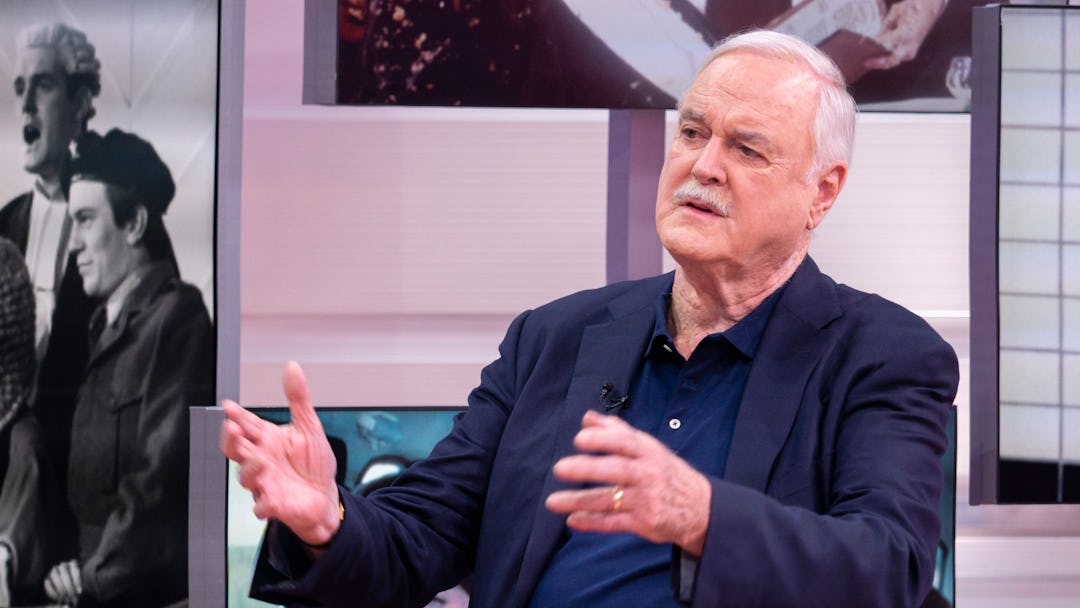Lawyers, a class to which this editor once belonged, are a sad lot. It’s not just that the work is boring and the hours long. It’s also that everyone hates you, as a recent survey attests. It named lawyering the “most despised profession in America.” But never fear, lawyers! A long and proud history of midlife career-changers prove that you can move up in the world — to the fourth-most-despised profession: artist. Here follow some great arts professionals who narrowly escaped the grip of the law.
John Cleese, member of Monty Python, studied law at Cambridge. Per an interview he gave to Fresh Air’s Terry Gross in 1997: “I probably would have stuck to my original plan to graduate and become a chartered accountant, perhaps a barrister lawyer, and gotten a nice house in the suburbs, with a nice wife and kids, and gotten a country club membership, and then I would have killed myself.”
William Sanderson, whose most recent feature role was as the slimy E.B. Farnum on Deadwood, attended law school and then never took the bar, choosing to chase his dream even if it meant waiting tables in a T.G.I. Friday’s. “I don’t regret going to law school. It taught me that I wasn’t smart,” Sanderson once told his alumni magazine.
Otto Preminger studied law at the University of Vienna, but apprenticed at a theater in his off hours. He only finished because his father promised to support his artistic career if Otto finished his formal studies. The training clearly haunted him; he’d eventually make a film called Libel .
Frederick Wiseman, the acclaimed documentarian of such long masterpieces as High School and Titicut Follies, went to Yale Law school. “[M]y little joke about law school is that I was physically present,” he told a recent interviewer.
Alexander McCall Smith, the author of The No. 1 Ladies’ Detective Agency, was a law professor for many years before he wrote his bestsellers. “The law, as lawyers know, is full of stories, many of them considerably stranger than fiction,” he once wrote in a trade magazine.
Sir Walter Scott, the author of Ivanhoe, was actually a criminal defense attorney in his native Scotland. He eventually took a post as a court clerk and from the vantage of its comfortble salary wrote his Romantic works about English myths and legends.
Studs Terkel, the famed oral historian, attended the University of Chicago Law School. “My three years at the U of C Law School (class of ’34) were the most bleak yet fascinating of my life. It was not the fault of the good professors; they did the best they could with me. Mine was a hopeless case,” he once said.
Wassily Kandinsky, the abstract painter, didn’t start even seriously start studying art until he was 30. Before that he’d been a lecturer in law and economics at the University of Moscow. The abstractions and analysis of his first career probably explain why he produced so many reams of theory for subsequent artists.
The painter Henri Matisse was on a firm track to become a court administrator until he got appendicitis and spent a year bedridden. His mother bought him paints; the rest is history.
Poet Wallace Stevens is usually described as having a day job as an insurance executive but it was in fact legal training that got him there. There are even strong links between his writings on insurance law and his poetry!
Archibald MacLeish, another poet and eventual Librarian of Congress, went to Harvard Law School. He practiced for three years, then gave up and moved to Paris to find Hemingway. “I discovered myself at around the age of thirty not even at my beginnings,” he told the Massachusetts Review, “because I had in the back of my mind always the feeling that I had to write poetry — don’t ask me why.”
